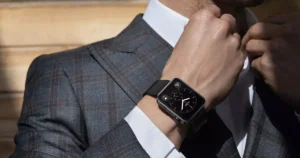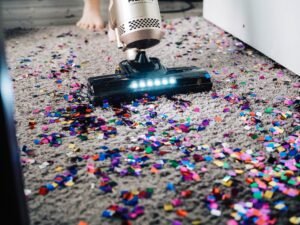
Here is the comparison between the Nikon D7200 and Canon D80. Both are the best selling product and good in competition for other cameras. Check out and I hope you can decide it which will be your best choice.
Nikon D7200 |
Vs |
Canon D80 |
| CMOS Sensor | Sensor | CMOS Sensor |
| Wifi, HDMI | Connectivity | Wifi, HDMI |
| Rechargeable, Li-ion Battery | Battery | Rechargeable, Li-ion Battery |
| 24.2 MP Resolution | Resolution | 24.2 MP Resolution |
| SD, SDHC, SDXC | Memory Card Type | Eye-Fi, SD, SDHC, SDXC |
| Yes, Type 802.11 b/g | Wifi | Yes, Type 802.11 b/g/n |
| No | Bluetooth | No |
| 675 Gram | Weight | 650 Gram |
| No | Touchscreen | Yes |
| LCD | Display Type | LCD |
Introduction
Nikon D7200
This is Nikon’s top-end DX camera that’s their crop line of cameras. So, one below the full-frame cameras but at the top end of the kind of sports and casual cameras, this is in fact their answer for sports and wildlife.
Canon D80
This is the EOS 80D, canon’s new mid-range DSLR. It’s not a compact camera, it’s a fully fledged aps-c DSLR with a nice big lens on the front, this is a really cool feature to have.

Design
Nikon D7200
The D7200 is Nikon’s top crop, It’s pro sized with classic DSLR styling, a large grip that demands a firm hand. It has excellent battery life even if you’re using live mode and shooting video.
Canon D80
This model of canon is look like pretty much D70. This camera will be ideal for the different weather conditions. The exterior of the camera is made up of polycarbonate. There’s a fully articulated 3-inch touch screen which you can flip and twist at any angle and tap to pull focus in movies or during live view. There is a nice grip in this model, so it can be use for long hours.

Image Quality
Nikon D7200
It supports six frames a second if you put in 1.3 x crop mode, it support 7 frames a second and that’s not a mind-blowing clip but it’s a good clip that’s kind of where you need to be at a minimum for things like sports and wildlife. You can now take 18 pictures in full 14 bit raw or if you’re willing to drop down to 12 bit raw which is fine and certainly a big step up from JPEG, you can get 27 pictures. Now, that’s the size of the buffer. so, the number of pictures that you could actually take could potentially be higher depending on the right speeds to the SD cards.
Now, one of the weaknesses in my opinion of the D 7200 is they shoot to 2 SD cards which tend not to be as fast as big CF cards but the technologies have improved.
Canon D80
It replaces the EOS 70D and boosts the resolution from 20.2 to 24.2 megapixels. The viewfinder coverage has also been increased a fraction to deliver 100% coverage. There’s a new 45 point AF system that’s up from nineteen points of the 70d and all across type sensors. Perhaps more importantly for everyday use, all of those points are now sensitive to light levels down -3EV, that is a great deal dimmer than the minus nor point five EV of the EOS 70D. As an additional bonus 27 of those 45 AF points can now work with lens apertures of f8 which is great if you’re using a telephoto means with a teleconverter. That means the camera can still continue to auto-focus.
It Upgrade from Digic 5 to Digic 6 on the image processing side now supports various time-lapse facilities for both Stills and video. There’s also flicker detection which is great if you’re shooting burst under artificial lighting that was last seen on models like 17 mark 2 and the high-end 1D x-series. The maximum sensitivity has been boosted from 12800 to 16000, although if you choose the expanded option that 80D maximum remains 25600. It shooting remains the same as the 70d and seven frames per second.
ISO controls the sensitivity of your camera sensor to light. So, a low ISO is good for taking pictures in bright light and a high ISO will brighten up the picture if you’re shooting in really low light conditions and with a really high ISO on this camera, you can definitely take pictures with a fairly fast shutter speed even at night especially in the city. This camera can shoot in in two different file formats. JPEG is the default and it’s what most people use and share, everything that goes on social media is going to be a JPEG file. RAW files capture a ton more information they produce higher-quality images often sharper images.

Video Quality
Nikon D7200
Nikon is really pushing the video capabilities of this camera. They released two separate sort of mini films showing off the features of the D 7200 and bragging about how they were filmed with the D 7200. This compare favorably to more capable video cameras, it’s not that is bad, it’s a step in the right direction. It will be available at standard full-frame, full aps-c frame, it does 1080p 30 frames a second which is a real surprise because the less expensive D 5500 does 60 frames a second as does almost every newly released Nikon.
If you want to do 1080p 60 frames a second you have to drop down to 1.3 X crop mode which gives you the same size sensor as a micro 4/3 sensor. If you’re dealing with that smaller sensor, then you pretty much have to compare it to the almighty GH4 because now you have the same sensor size and the GH4 will do 96 frames a second at 1080p then it will also go up to 4k which this camera completely lacks. The GH4 also has an electronic viewfinder, a tilting screen, a touchscreen, smoother auto-focus, it is all-around, a much more powerful video camera. They’re also giving you flat picture control which is basically a not very contrasting picture, so the contrast is cranked way down.
It gives you just more options in editing but it doesn’t come close to comparing to like the raw video you would get from Black-magic camera or a higher-end red camera. They’re also giving you custom picture control which is kind of a cool feature, I’ll say I’m not enamored the flat picture control isn’t necessarily for video, you can take still pictures with it and they show off the custom picture control being used for still video too. But, I think if you’re deep into it you’re shooting raw and if you’re shooting raw, all these picture control things are pretty meaningless unless seeing altered colors on your preview screen after you take a picture is that important to you. So, if that is important to you, you can edit a picture and then create a custom pic control that will automatically apply those color settings to the picture but if it’s raw you have to go back and edit it anyway but it will work in video.
They now give you auto ISO in manual mode which is a feature we’ve seen in most of the new cameras coming out. You can let the camera automatically adjust the exposure for changing lighting conditions. It’s something a casual videographer does if you’re shooting your kids, sports or something and not something necessarily a more serious videographer would do. They’re introducing a new wireless mic, the ME-W1.
Video functionality doesn’t quite live up to still mode more in a minute. The viewfinder is optical and inline, it is an SLR after all. If you’re shooting in A or M mode in live view, you must set the aperture before pressing the Live View mode button. Only the LCD is available in live, you there’s no elapsed time just remaining time displayed. While shooting, the ISO and shutter can be adjusted, aperture can’t be changed while recording and back focus is not available in movie mode. So, it’s full manual or auto by soft pressing the shutter, expanded view doesn’t work while recorded. Shutter speeds 125 to 18000, a few slower speeds might be nice for special effects.
There’s no integrated ND filter which is unfortunate in a camera that’s otherwise a capable video performer. When you’re shooting at one sixtieth shutter, you nearly always want indeed.
Canon D80
Dual pixel CMOS AF now works with all Canon EF lenses not just the recent ones and it’s also supported at the maximum movie frame rate of 1080 at 60 P. There’s also a new headphone jack in addition to the microphone input, so these are all nice upgrades over the earlier EOS 70D. Although I’m very sorry to say that there is no 4k video in this camera, since both Panasonic and Sony now offer 4k video in their mid-range mirror-less cameras.
This is an awesome video camera. It’s got this articulating screen that flips out that means you can touch to focus. When you want to start recording, hit the start/stop button and it will start recording now that’s really all there is to it. You can push the shutter halfway and it will try to focus it. It’ll also keep up with different focusing modes.

Lens
Nikon D7200
This camera has VR lens providing optical stabilization. It engages with focus and provides a clearly steadier image. It’s great in shooting handheld in live view where it’s much harder to hold the camera steady. When shooting video with the tripod, turn it off, there’s a switch on the lens to stop it jumping as you pan or tilt.
Canon D80
The 80D was launched with a new zoom lens, the EFS 18 25 millimeter usm. Now, if that sounds familiar to you, you’re not going mad because of course canon has an existing zoom lens called the EFS 18 25 millimeter STM. Now these two lenses share the same focal range, the same aperture and they would also appear to have the same optical construction. So, in terms of image quality, they should be pretty much the same but there is one important difference and that’s revealed by the acronym at the end which of course refers to their respective auto focusing systems.
The older model had an STM focusing motor that was designed to be very smooth and very quiet for movies when you refocusing and for that it worked really well. However, it wasn’t quite as quick as canons existing USM technology when you were refocusing for stills in burst action sequences. So with this new lens, Canon has developed a new nano USM focusing motor which is said to combine the speed of the existing USM focusing motors for your action stills with the smoothness and the quietness of STM V movie refocusing, so, this lens could do it all.
It’s got an additional trick up its sleeve or I should say under the barrel where you will find some electrical contacts which designed to mate with the new PZ E1 power zoom adapter. This is little box powered by four AAA batteries that Clips underneath this lens and provides it with a rocker switch and this allows you to actually drive the zoom by a motor and this is great if you want to smoothly zoom in and out during movies. The PZ E1 offers two zooming speeds and here you can see it’s zooming at the fast setting which takes about three seconds to go from 18-135 mm or back again, meanwhile the slow takes about 10 seconds.
In this kit lens, F 3.5-5.6 are the lowest f-stop numbers that this lens supports. So, this lens goes down to F 3.5 when it’s at the minimum zoom, when i zoom in to f 135, it’s at the longer the higher f-stop number.

Auto Focus
Nikon D7200
It can go down to auto focusing and -3 EV which is it’s dark, like human eye, so what the human eye can perceive in darkness and I don’t have too many problems with DSLRs focusing at night nowadays but that’s a step in the right direction. This camera have 51 auto-focus points and they’re spread across the frame and this was always a strength of the D 7100 and now the D 7200 has basically the same system.
You can see the points cover almost the entire frame and if you decide to go into 1.3 x crop mode, you get faster frame rates. If you do go down there than those auto-focus points cover basically the entire frame. By the way, just coincidentally the 1.3 X crop is almost the exact same size as a Micro Four Thirds sensor. So, the camera by default is an aps-c camera, it has a 1.5 X crop compared to a full-frame camera. So, adding in another 1.3 X crop on top of that takes you to like a 1.9 5x crop just like micro four-thirds.
The center auto-focus points are cross-type which means they perform better more accurately and for sports and wildlife, those are just going to work better. I’ve never had too many problems with the outside ones and in fact it’s not always obvious when you switch to the outside ones like I don’t ever think that the performance on these outside ones is way worse.
I’ve always had all the auto-focus points in these systems but the cross-type points in the center performs the best and that’s focus point is a little bit special and that it can auto-focus with in f8 lens. It means that is you could take your 300 millimeter f4 Prime put a 2x teleconverter on it and effectively have a 600 millimeter f8 plus 1.5 X crop but it would still be able to auto focus with that teleconverter on. So, many other cameras can’t do that, you’re limited to that center auto-focus point which limits your composition.
Canon D80
It still features canon’s dual pixel CMOS AF which is eighty percent to the sensor area workers phase detect auto focus and this allows it to deliver smooth and confident refocusing in live view in during movies.
The button next to the shutter button gives you the option between 45-point AF, a large zone AF where it focuses anywhere in the middle, multi zone AF where or it focuses in a block but you can move that block around. Then, my favorite one point AF. If you’re shooting flying birds against a blue sky, the group AF will work much better. So, for flying birds in the woods I would use single point AF, for portraits that use single point AF, for sports I would use single point AF. But, for flying birds against a blue sky I would probably use zone AF or even 45 point AF because it can be hard to keep the bird exactly on your focusing point as it’s moving around.

Wifi
Nikon D7200
They’re also adding in Wi-Fi and NFC. So, Wi-Fi is wireless networking like with your computer and it’s a useful tool for getting pictures from your camera to your smartphone. It’s a clumsy process on every camera, Nikon Wi-Fi software isn’t great compared to the others. NFC is simply a shortcut an easier way to set up Wi-Fi. So, file transfers don’t happen over near-field communications NFC, they happen over Wi-Fi.
You can view all of the images on the card in slot one, although it takes a few minutes to transfer all of the thumbnails, You can send one or multiple photos from the camera’s menu. To transfer an image from card two, pull card one or swap cards. There’s no ability to record or transfer movies and Wi-Fi is not compatible with HDMI out.
Canon D80
This camera has Wi-Fi built-in, so you can quickly get your pictures from your camera to your smartphone and then from your smart phone to any social media.
I should also mention that the WiFi on the EOS 80D is now complemented with NFC. So, if your smartphone supports NFC, you can simply hold it against the body and it will sort out all of the passwords and communications for you it’s very cool, it works very easily.

Conclusion
Nikon D7200
The worst camera is one you’ve left behind because it’s too big and heavy. So, if you can get pass that the d7200 is an excellent camera. It’s capable of creating great stills and good video.
Canon D80
I think canon did a great job with this, I really like the way they integrated the video with a solid DSLR. This camera is fully capable of taking stills and then they’ve done a great job with adding the video capabilities similar to the 70D except I think this has even more improvements. I like its ability to pull focus, I think they did a great job with it.





